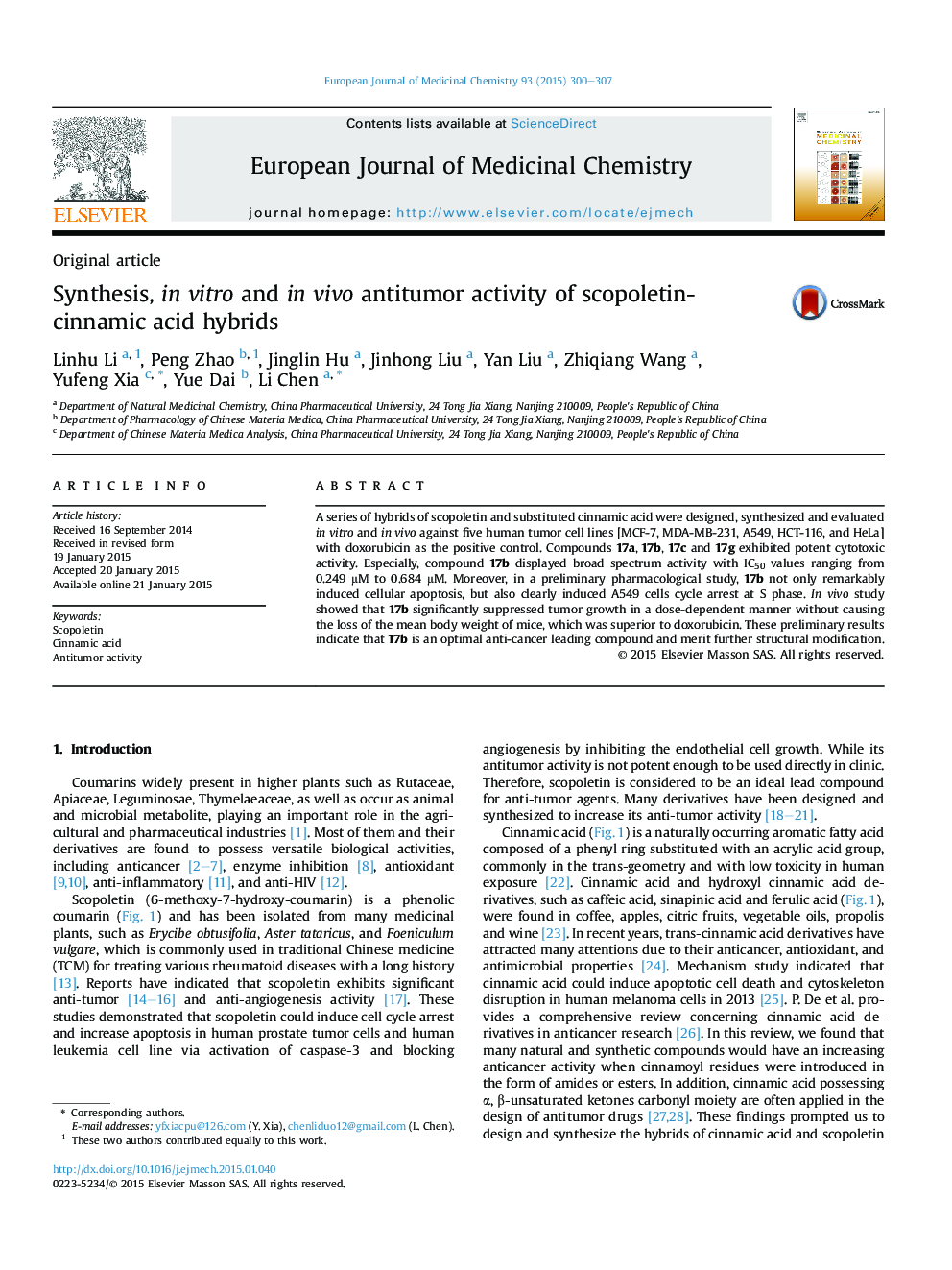| Article ID | Journal | Published Year | Pages | File Type |
|---|---|---|---|---|
| 1395374 | European Journal of Medicinal Chemistry | 2015 | 8 Pages |
•A series of novel scopoletin-cinnamic acid hybrids have been synthesized.•Most of the hybrids showed improved antitumor activity than parent compound.•The most potent compound 17b was able to cause S cell cycle arrest and cell apoptosis at A549 cells.•Compound 17b showed superior activity to that of the positive doxorubicin in vivo.
A series of hybrids of scopoletin and substituted cinnamic acid were designed, synthesized and evaluated in vitro and in vivo against five human tumor cell lines [MCF-7, MDA-MB-231, A549, HCT-116, and HeLa] with doxorubicin as the positive control. Compounds 17a, 17b, 17c and 17g exhibited potent cytotoxic activity. Especially, compound 17b displayed broad spectrum activity with IC50 values ranging from 0.249 μM to 0.684 μM. Moreover, in a preliminary pharmacological study, 17b not only remarkably induced cellular apoptosis, but also clearly induced A549 cells cycle arrest at S phase. In vivo study showed that 17b significantly suppressed tumor growth in a dose-dependent manner without causing the loss of the mean body weight of mice, which was superior to doxorubicin. These preliminary results indicate that 17b is an optimal anti-cancer leading compound and merit further structural modification.
Graphical abstractA series of novel scopoletin-cinnamic acid hybrids were synthesized as antitumor agents. The most potent compound 17b showed potent activity in vivo and vitro by causing cell cycle arrest and induced apoptosis in A549 cell lines.Figure optionsDownload full-size imageDownload as PowerPoint slide
